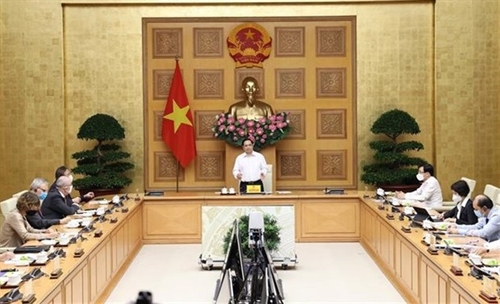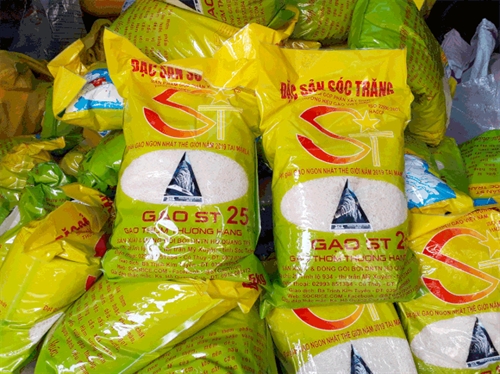On March 24, 2020, the Government issued Decree 35/2020/ND-CP setting forth the long-awaited notification thresholds of the new Vietnamese merger control regime provided in the 2018 Competition Law. Since then, the new regime has brought Vietnam’s merger control process closer to the established practice employed in more developed jurisdictions around the globe.
Truong Nhat Quang, Diep Hoai Nam and Nguyen Van Hai[1]
Introduction
More than a year ago, the long-awaited and ambitious legislative piece that governs merger control in Vietnam was issued and came into effect. The issuance of Government Decree 35/2020/ND-CP dated March 24, 2020, that took effect on May 15, 2020 (Decree 35), together with the 2018 Competition Law (collectively, the competition regulations), have drastically changed the way the Vietnamese merger control regime operates. Under the competition regulations, a new and more powerful national competition commission (NCC) will be established to oversee merger control in Vietnam. Pending the formation of the NCC, the Vietnam Competition and Consumer Authority (VCCA) under the Ministry of Industry and Trade currently serves as the interim regulator that handles merger filings in Vietnam.
The competition regulations introduce the effects-based approach (which focuses on a comprehensive assessment of potential anti-competitive effects of a merger if such merger meets the control test and any of the reportable thresholds based on the size-of-transaction, market share, asset and revenue criteria) to merger review, replacing the previous form-based approach under the old regime (which requires the competition authority to look no further than a quantitative combined market share).
The immediate effect is rather obvious: 62 merger filings were made in 2020 alone as compared to some 160 filings made during the 14-year period under the form-based regulations.[2] The new regime has brought Vietnam’s merger control process closer to the established practice employed in more developed jurisdictions around the globe.
As things are new, both the business community and competition authority alike are experiencing a learning curve towards a more efficient implementation of the new merger control regime in Vietnam. With this in mind and with over a year of implementation, as progress has been made and lessons have been learned, a number of important issues have arisen and remain open which we discuss below.
 |
| Inside a VinMart, a subsidiary of VinCommerce in which the Korean SK Group holds 16.26 percent of shares__Photo: https://vingroup.net/ |
Intra-group transfers
One of the issues that is left open under the competition regulations is whether an intra-group transfer may be exempted from merger control. Intra-group transfers may take a form of a merger between a parent and its subsidiary or between two subsidiaries of the same parent.
Obviously, an internal restructuring within a group of companies would unlikely result in any anti-competitive effect on the relevant market. Such a view is broadly shared among jurisdictions that operate an anti-trust regime. The EU members, India and Singapore all introduce a specific exemption from merger control for intra-group transactions.
In the context of the Vietnamese anti-trust regime, an outright exemption for intra-group transfers has not yet been provided under the competition regulations. However, a plain reading of the definition of “acquisition” under Decree 35 suggests that an acquisition may be considered an “economic concentration” that would trigger merger filing only if such acquisition results in a change of control over the acquired entity.
Accordingly, while there is no express basis for an outright exemption for intra-group transfers available under the competition regulations, an intra-group transfer which typically would not result in a change of control should be exempted from merger control or granted with a fast-tracked, simplified review by the competition authority.
There have been precedents of intra-group transfers under the competition regulations such as the internal restructuring of a leading Vietnamese private group for which the VCCA has granted a clearance in less than 1 month from the filing date.
Negative control
Negative control, simply put, is a situation where a shareholder or a group of shareholders of a company can veto a proposed decision of such company.
For instance, a 36-percent shareholder of a Vietnamese joint stock company may veto certain matters that are decided by the company’s general meeting of shareholders, or a minority financial investor is granted with certain shareholder’s rights that enable it to veto certain governance and operation matters in order to protect its financial investment in its investee company in the absence of its direct participation in the corporate governance of such company.
While the negative control issue had caused a little confusion in the early days of the implementation of Decree 35, a plain read of Article 2.1 of Decree 35 seems to suggest that negative control was not captured by the lawmakers when Decree 35 was being drafted.
Indeed, the verb “to decide” is used in multiple places when it refers to the exercise of control by the acquirer over the acquired entity. The view that the control test is generally based on positive control and that negative control is not captured under the competition regulations has been broadly shared among competition law practitioners in Vietnam and, as far as we are aware, recently acknowledged by the VCCA.
We note further that the approach to this control test differs from jurisdiction to jurisdiction but essentially from the jurisdictions we have researched, veto rights that constitute a control must be related to strategic decisions on the business policy of a company and that they must go beyond the veto rights normally accorded to minority shareholders in order to protect their financial interests as investors in an investee company.
This position is, for example, articulated under the EU competition law. In Vietnam’s context where many deals are minority financial investments in which financial investors take small positions (e.g., 5-10 percent) coupled with a few standard minority protection veto rights, applying the merger control regime in those cases will be a barrier to M&A activity and waste limited resources at the competition authority.
Additional acquisition of shares by the controlling shareholder
It is also important to establish whether a merger filing is needed when an acquirer acquires more shares in a company over which it already has control, assuming a particular reportable threshold has been met? This could happen when a 60-percent shareholder of a company acquires another 10 percent of shares in the same company and the transaction value of such acquisition crosses the size-of-transaction reportable threshold. The answer to this question is unfortunately not black and white under the competition regulations.
Nevertheless, if we are to follow whatever approach that may be adopted for intra-group transfers as discussed above, additional acquisition of shares in a company by the controlling shareholder of such company should be treated as the same as that is applicable to intra-group transfers. This is because any such acquisition is effectively a transfer of shares in a subsidiary to its parent and would not result in any change of control over the subsidiary.
For the time being, in absence of an outright exemption, merger filings are still made for those follow-on investments. In our view, those investments should also be exempted from the scope of merger control or granted with a fast-tracked, simplified review by the competition authority.
Conglomerate mergers
Conglomerate mergers involve companies that operate in different product markets. Unlike horizontal merger (i.e., between competitors producing similar products) or vertical merger (i.e., between companies that have an input-output relationship), conglomerate mergers less likely result in anti-competitive effects on the relevant markets.
To be fair, a conglomerate merger that involves companies producing complementary products might create the so-called “portfolio power” which has been subject to scrutinization by anti-trust authorities in a number of jurisdictions.
For example, an acquisition of a clothing company by a jewelry company, while their respective products are different, could result in a portfolio power in fashion industry for the merging entity that operates both clothing and jewelry arms. A pure conglomerate merger (e.g., between a steel producer and a beverage producer) would not likely result in any portfolio power and thus, should not lead to anti-competitive effects on the relevant market.
The infant competition regulations have understandably not specifically addressed conglomerate mergers although this type of merger is frequently seen in practice. Most of the filings we have worked on under the framework of the competition regulations concern conglomerate merger where the merger parties do not operate in any overlapping market. Accordingly, a further guidance on this issue is very much expected and pure conglomerate mergers should be warranted a fast-tracked, simplified review if one is ever contemplated.
Relevant market and combined market share safe harbor
The beauty of merger control review starts with the very economic concept: the relevant market. Defining the relevant market is one of the first steps in a full competition analysis. The legal basis for defining the relevant market under the competition regulations is largely inherited from the old regulations dating back to 2004.
And while the fundamental principles for determining the relevant market would not, and should not, have changed much since 2004, defining the relevant market might not have been a frequent (and rather daunting) exercise under the old competition regime given the small volume of filings made under the old competition regime.
With the surge in the number of filings that have been and are expected to be made under the competition regulations, a more detailed guidance that aims to assist applicants in determining the relevant market would be a much-welcomed development. Any such guidance should be drafted in consultation with relevant stakeholders.
In addition, the VCCA may want to consider building a public database of its rulings on relevant market. This would facilitate merger filing preparation by applicants and, at the same time, enhance the consistency in the VCCA’s rulings, although the invocation to any such rulings would also need to take into account the evolvement of relevant market conditions over time.
Under the competition regulations, a reportable merger may proceed if it satisfies one of the safe harbors provided for under Article 14.2 of Decree 35. Of these safe harbors, a merger may be cleared if the combined market share of the merger companies is (i) under 20 percent or, (ii) 20 percent or more in the relevant market but the total market share squares of the merger companies in the relevant market post-merger will be less than 1,800.
In this regard, we believe that this safe harbor should be available if one merger party has zero market share in the relevant market and the other party has under 20 percent market share in such market. Nevertheless, there remain some doubts over this interpretation in the absence of a precedent ruling by the VCCA and therefore, further clarification on this issue is much needed.
Concluding remarks
As with any anniversary, there are achievements to celebrate and resolutions to be implemented. The introduction of the new competition regime is undoubtedly an applaud able achievement.
In addition, pending the establishment of the NCC, the VCCA as an interim regulator has made significant efforts and has developed a team many members of which represent a young and dynamic generation of government officials. Handling more than 60 filings in any single year is a remarkable full-time job.
Over a year of implementation, certain improvements that need to be made to the current regulations and practice have been identified and the issues discussed herein could not by any means be considered exhaustive. The timely addressing of these issues (e.g., granting exemption or fast-tracked review for certain types of mergers or building a public database of market definition rulings), as well as other matters that may be identified, will enhance the application and enforcement of merger control regulations and provide more predictability to the business community, highlighting the Government’s continued commitment to giving impetus to M&A and investment activities at large.
In addition, enforcing merger control on the basis of effects-based approach requires extensive economic analyses to be done and therefore, more human resource would need to be allocated to the VCCA or the NCC in the long run.-









